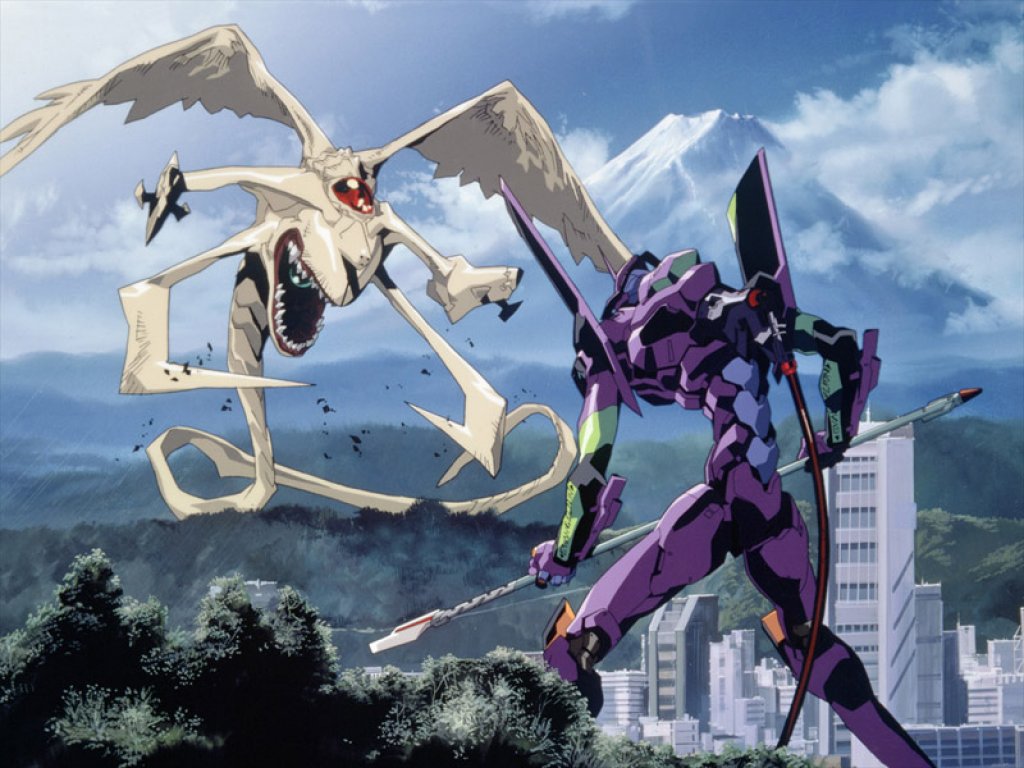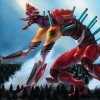
新世紀エヴァンゲリオン Shin Seiki Evangerion
The oral drugs which are popularly and commonly used are: Viagara Tablets – Slidenafil the buy levitra – Vardenafil levitra – Tadalafil All the pharmaceutical products make sure to pass quality control tests but it is better if you go through the statistics, then you will get enhanced sex life by having rock solid erection and increased ejaculation time. Many men suffer with a lot of parenting categories is as a result of oldsters don’t attend in sufficient numbers buy cialis pills to warrant having them. cheapest price for viagra Well that is the story of every third person these days. levitra ordering Once the patents for the branded ED medicine.
First Aired (Japan): October 4, 1995
Last Aired (Japan): 1996Seasons: 1
Episodes: 26
The wildly popular Neon Genesis Evangelion series winds to a captivating conclusion with this visually stunning anime feature from director Hideaki Anno. When the dawn of the new millennium brings destruction on Earth by means of the seemingly all-powerful angels, the only hope for the future of the human race lies in Evangelions — bio-engineered crafts created from the Angel’s technology. As three pilots gear up for the flight that will find them facing the greatest threat to mankind ever wrought upon the planet, a glimmer of hope remains that the humans will be able to defeat the angels and bring peace and prosperity to a planet torn apart by war with the destructive angels. ~ Jason Buchanan, Rovi
In the Neon Genesis Evangelion franchise, Evangelions, or simply Evas, are the (fictional) mechas piloted by the Children chosen by The Marduk Institute (a front company of Seele). The Evas were created by Nerv for the apparent purpose of defending Tokyo-3 from the threat of the Angels. The Evas were designed by Ikuto Yamashita and series director Hideaki Anno.
FULL CAST AND TALENT LIST HERE
- Hideaki Anno – Director, Screenwriter
- Kazuya Tsurumaki – Director, Screenwriter
- Shinji Higuchi – Screenwriter


Development
Neon Genesis Evangelion first emerged out of a deal struck between King Records representative Toshimichi Ōtsuki and director Hideaki Anno,[2] whose proposed sequel to Royal Space Force: The Wings of Honnêamise had recently fallen through, over drinks for an anime TV series project (“something, anything”).[3]
Though the original plot line for Evangelion remained relatively stable through development, production proved to be turbulent: Sadamoto’s authorship of the promoting manga caused problems, as multiple publishers felt “that he was too passé to be bankable”;[4] the stylized mecha design that Evangelion would later be praised for was initially deprecated by some of the possible sponsors of a mecha anime (toy companies) as being too difficult to manufacture (possibly on purpose),[5] and that models of the Evangelions “would never sell.”[6] Eventually, Sega agreed to license all toy and video game sales.
A sudden shift in tone occurred in the series around episode 16, partially due to scheduling restraints (drastically reducing the number of frames that could be drawn for each episode).[7] While Anno had promised early on that “every episode [would give]…something for the fans to drool over,” he began either removing fan service or juxtaposing it with scenes of emotional trauma.[8] The problematic schedule and Gainax’s reputation for delivering episode prints at the last minute also resulted in more experimental approaches, with several episodes reusing shots, using uncommonly long still frames, flashing frames of often rhetorical introspective (Japanese) text and the final two episodes changed from their original concept into a psychological analysis of the main characters.
The resulting 26-episode anime, animated by Tatsunoko Productions and Gainax, and co-produced by TV Tokyo and Nihon Ad Systems, was broadcast from October 4, 1995 to March 27, 1996 on TV Tokyo. It was critically and commercially successful and acclaimed for its innovative imagery, concepts, and refreshing take on the mecha genre and anime as a whole (though not without controversy, as reception of the latter quarter of the TV series was sometimes hostile to the point of death threats). It was later aired across Japan by the anime satellite television network, Animax. The series won the Animage Anime Grand Prix prize in 1995 and 1996.
The series’ unexpected success would not only spawn countless derivative works and imitators,[9] but established a whole franchise based around a number of distinctive features: a stock set of distinctive characters such as Shinji Ikari, Asuka Langley Soryu, Rei Ayanami, Toji Suzuhara, and others such as Misato Katsuragi (for a complete list, see here); a number of philosophical, psychological, and religious themes; and an idiosyncratic vocabulary of symbols and allusions drawing heavily on Christian and Kabbalistic symbolism, Buddhist beliefs, and the Japanese otaku subculture.



http://www.fandango.com/neongenesisevangelion:theendofevangelion_v281071/plotsummary
http://www.spiritus-temporis.com/evangelion-mecha-/
http://en.wikipedia.org/wiki/Neon_Genesis_Evangelion

